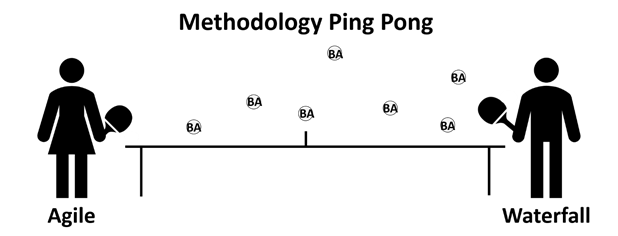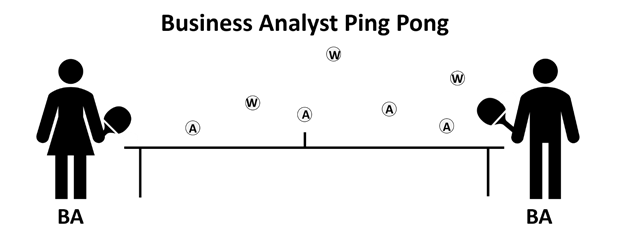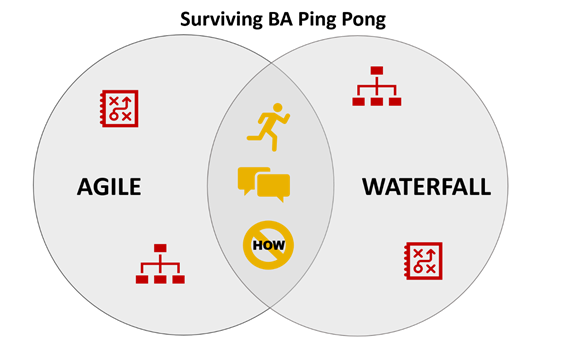7 Approaches that Business Analysts Should Use to Get Out and Network
I received a phone call from a peer in another company, asking me if I had ever written anything on how to network.
She mentioned that she had reviewed my blog and couldn’t find anything thing on the topic. They were particularly interested in the idea of business analysts networking and going to events. The sun was out, spring was in the air, and they liked golf—great reasons for getting out of the office.
Their interest got me thinking about the importance of getting out of the office and building a network.
Go with a Purpose
It never made sense to me to go anywhere without having a purpose for being there. As a professional, I have to go to networking events. Because I build a career in the consulting profession, networking has been somewhat mandatory. Honestly, for the majority of these events, I would have rather been somewhere else. That is where purpose comes in. Now when I attend events, I set a goal (nothing big) and focus on how I can help someone else. Try creating a purpose beyond just meeting people, collecting cards and speaking.
Managing Time
I am terrible at setting time aside to attend events. If I don’t mark my calendar with vacation time, long weekends and events, chances are I will forget them. I will work. It is the way I am wired. So I had to learn the skill of looking at my calendar annually and setting time aside at the beginning of the year when I am not available to work. A business associate and friend who’d noticed that I never put time aside, challenged me to book events so I wouldn’t have to be in the office all the time. It’s hard to avoid distractions, but unless you plan your time for when you are going to attend events, there is a good chance you won’t go to them. So set the time aside now.
All by Yourself
We tend to go to professional events with the same people. Your friend at work is going, so you attend also. During the evening or day, you hang out with the same people. Why not go alone? You can add a purpose. For example, maybe you want to meet someone; a decision maker, recruiter or vendor so you can have a private or personal conversation. If someone in your network introduces you to that person, seek that person out and have a conversation without peers around you. More importantly, set yourself up, so you are not always with the same people. Expand your network and make new friends.
Become Part of a New Team
I try to do this when I am going to a professional event. In the introduction, I stated that my peer mentioned attending an Association golf event. This would be a great opportunity to meet new people. I once did this and ended up on a team with two CEOs and a CFO from three different companies. We all had a great time. Throughout my career, they have helped me to connect with a lot of other people. Maybe golf is not your thing. That is fine. There are lots of ways you can become part of a new team. Just be willing to step out there and make it happen.
Be Informed Through Research
If you’re attending an event where you are meeting people, you have a limited amount of time to make an impact. It is important that you be informed about an event before you attend it. This includes checking out the host’s background, the sponsors, the types of people attending the event and determining who you want to meet. Get the information you need from Twitter, Facebook, LinkedIn and the professional association’s website. For example, I am a music buff; I play the guitar, and I listen to rock stations on Spotify. There was a CEO I wanted to meet. I noted on Facebook that he played guitar for fun and loved to jam with other musicians. So I decided to meet him and talk to him about music. We had a great discussion and created a relationship. You don’t have to research business-only things. Your research should be about finding and sharing common interests. I guess that’s another lesson learned.
Dress for Success
Can’t say I have always liked that term as it means different things to different people. Clothing is such a personal thing. In the context here, I think it has to do with knowing the event and dressing accordingly. I often contact an event’s coordinators and ask what the appropriate attire is for the event. Some events are formal, while others are downright casual. I have done a lot of work in the ICT industry (information, communications, and technology) where the standard of the organizations is a T-shirt, a pair of blue jeans and no shoes. I have to admit I feel at home in these organizations. Periodically I have to wear a suit and play the part. Still, you can find a signature piece to wear; something that creates conversation. Try a unique, colored shirt, or a hat or pin. I am a man of many hats; from baseball caps to fedoras with different styles for different seasons. I initially wanted protection from the sun, but as things progressed, I started to wear different styles. Interestingly enough, they have become conversation starters. I think you can dress for your success and be unique at the same time.
Have Your Coordinates Ready
Years ago (and maybe today) they are teaching to always bring business cards with you to events to give out to people. In my mind, this is very traditional and is important for a certain generation. Now we have so many options when it comes to sharing our coordinates as a means to connect with people. Still, it is important to pre-plan how you are going to share your information with your new friends. First, consider business cards since they still have a place at networking events. Second, if your company is no longer providing business cards, consider having something unique to hand out. If can be small. For example, I am an author, so I carry bookmarks with me that have the 10 Steps of Strategic Planning written on them. You could easily have something like that for your business; a small keepsake to hand out when you need to provide your coordinates to someone. Third, chances are you have your smartphone. Don’t be afraid to get someone’s email or cell number and text them your coordinates. It is the easiest way to connect with people. Follow up quickly and share information.
Final thoughts
Personally, just like a lot of people, I struggle with going to networking events. So I had to create a process around attending events; setting the time aside, going with purpose and being prepared. Sitting in your office all the time is not good for your long-term career and business. You have to get out and meet new people to share information with, get new ideas and have fun. I think the truth is that people want the same things from networking that you want: enjoyment, meaningful conversation and to create relationships. All you have to do is pick your events and go do it. Good luck.
Remember, do your best, invest in the success of others and make your journey count.
Richard.







